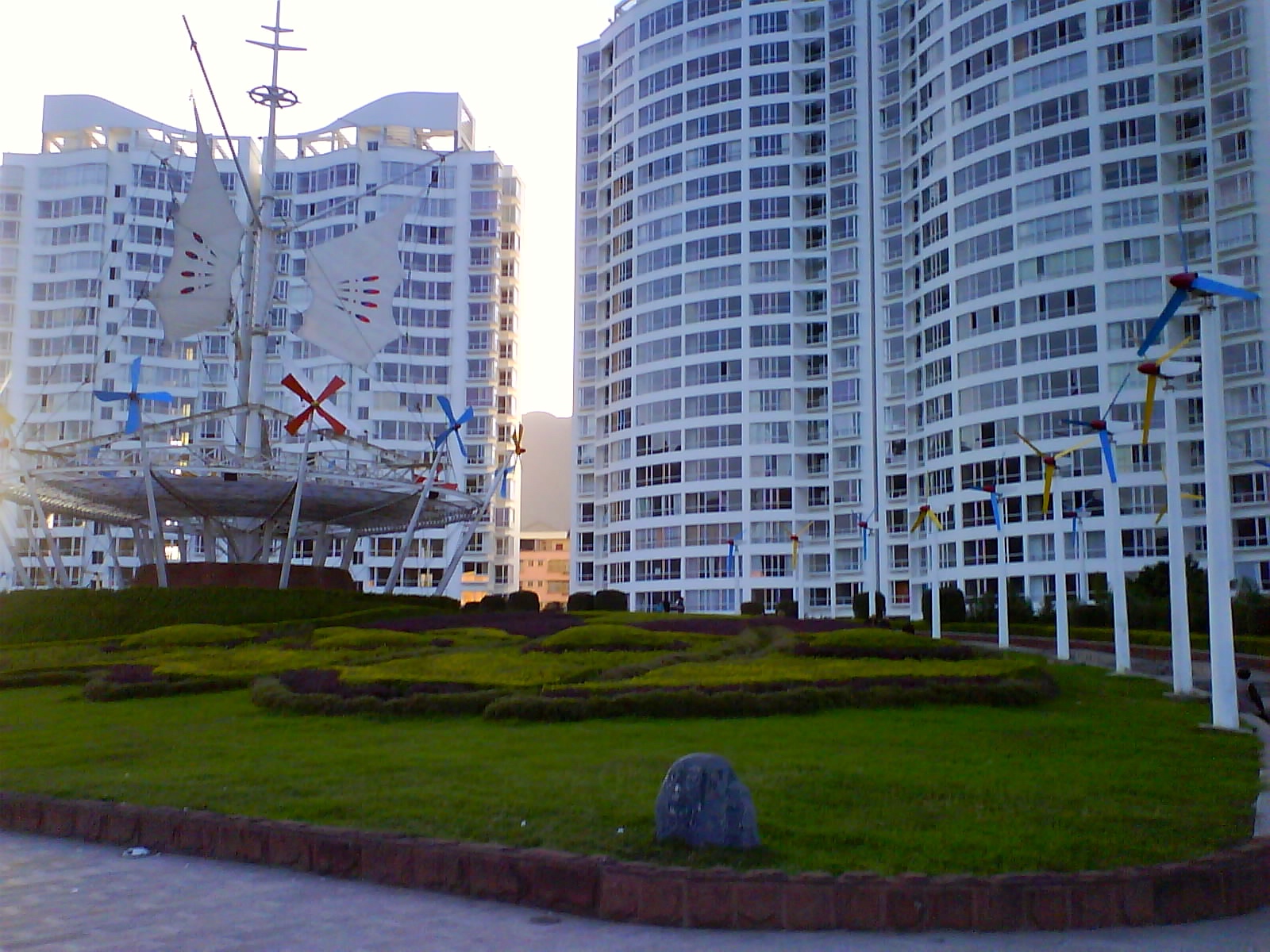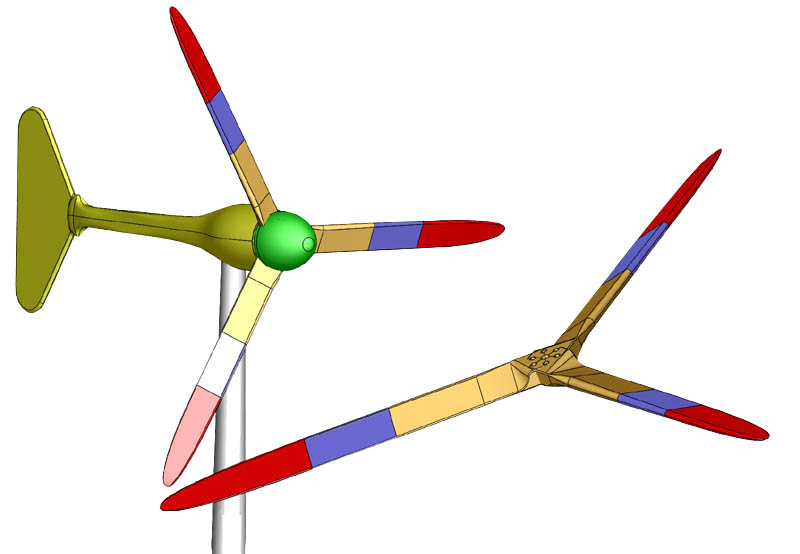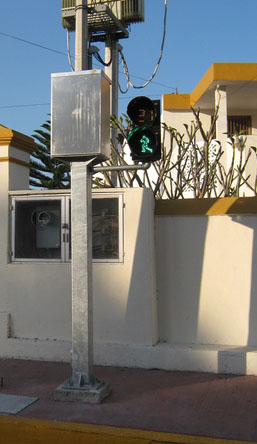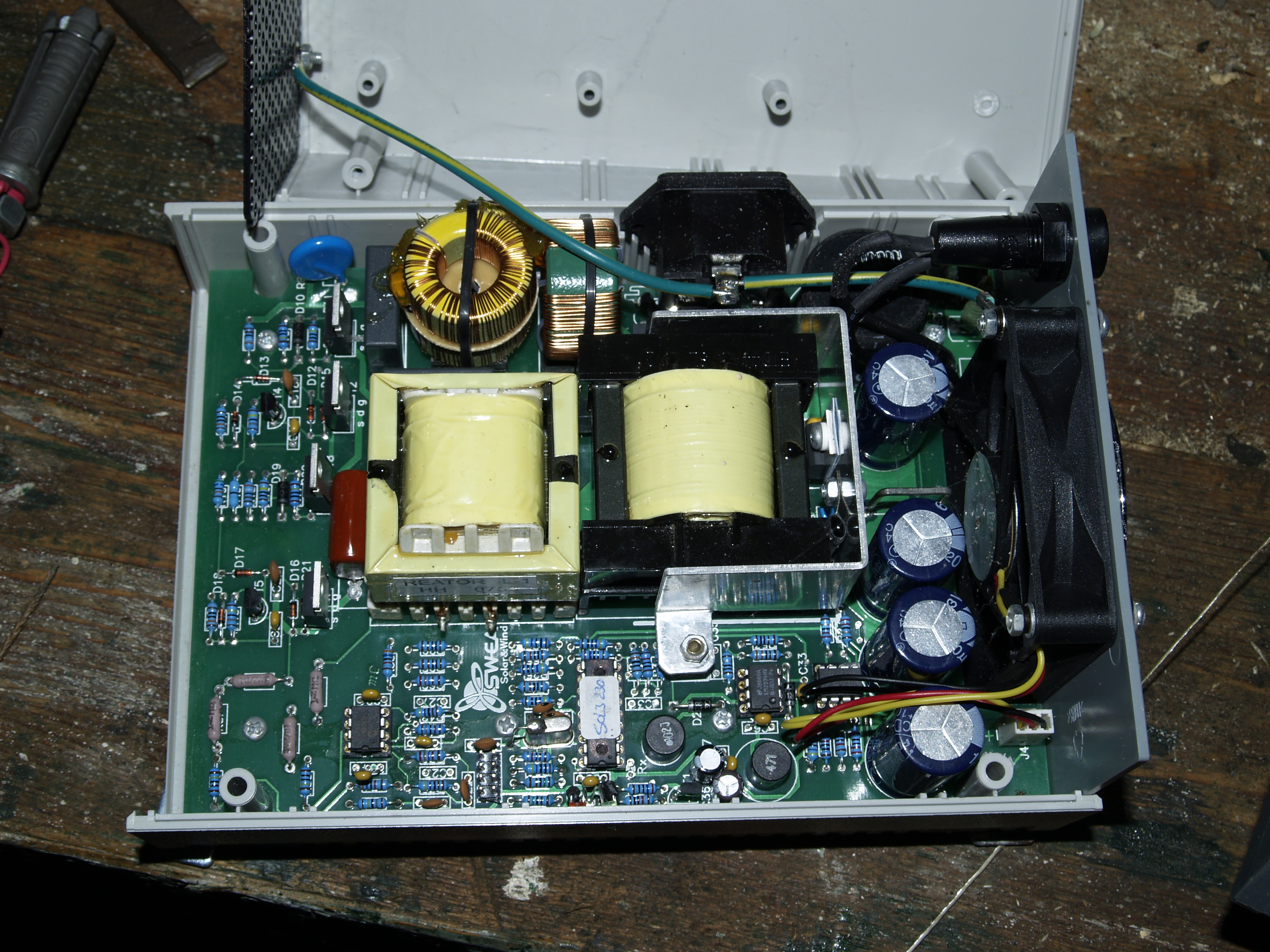|
Microgeneration
Microgeneration is the small-scale production of heat or electric power from a "low carbon source," as an alternative or supplement to traditional centralized grid-connected power. Microgeneration technologies include small-scale wind turbines, micro hydro, solar PV systems, microbial fuel cells, ground source heat pumps, and micro combined heat and power installations. These technologies are often combined to form a hybrid power solution that can offer superior performance and lower cost than a system based on one generator. History In the United States, Microgeneration had its roots in the 1973 oil crisis and the Yom Kippur War which prompted innovation. On June 20, 1979, 32 solar panels were installed at the White House. The solar cells were dismantled 7 years later during the Reagan administration. The use of Solar water heating Solar water heating (SWH) is water heating, heating water by sunlight, using a solar thermal collector. A variety of configurations are a ... [...More Info...] [...Related Items...] OR: [Wikipedia] [Google] [Baidu] [Amazon] |
Small Wind Turbine
Small wind turbines, also known as micro wind turbines or urban wind turbines, are wind turbines that generate electricity for Microgeneration, small-scale use. These turbines are typically smaller than those found in wind farms. Small wind turbines often have passive yaw systems as opposed to active ones. They use a Direct-drive mechanism, direct drive generator and use a tail fin to point into the wind, whereas larger turbines have Gearbox, geared powertrains that are actively pointed into the wind. They usually produce between 500 W and 10 kW, with some as small as 50 W. The Canadian Wind Energy Association considers small wind turbines to be up to 300 kW, while the IEC 61400 standard defines them as having a rotor area smaller than 200 m2 and generating voltage below 1000 Va.c. or 1500 Vd.c. Design Blades Turbine airfoil, blades for small-scale wind turbines are typically in diameter and produce 0.5-10 kW at their optimal wind speed. Most small wind tur ... [...More Info...] [...Related Items...] OR: [Wikipedia] [Google] [Baidu] [Amazon] |
Deep Cycle Battery
A deep-cycle battery is a battery designed to be regularly deeply discharged using most of its capacity. The term is traditionally mainly used for lead–acid batteries in the same form factor as automotive batteries; and contrasted with starter or ''cranking'' automotive batteries designed to deliver only a small part of their capacity in a short, high-current burst for starting an engine. For lead–acid deep-cycle batteries there is an inverse correlation between the '' depth of discharge'' (''DOD'') of the battery and the number of charge and discharge cycles it can perform; with an average depth of discharge of around 50% suggested as the best for storage vs cost. Newer technologies such as lithium-ion batteries are becoming commonplace in smaller sizes in uses such as in smartphones and laptops. The new technologies are also beginning to become common in the same form factors as automotive lead–acid batteries, although at a large price premium. Types of lead–acid de ... [...More Info...] [...Related Items...] OR: [Wikipedia] [Google] [Baidu] [Amazon] |
Cable Harness
A cable harness, also known as a wire harness, wiring harness, cable assembly, wiring assembly or wiring loom, is an assembly of electrical cables or wires which transmit signals or electrical power. The cables are bound together by a durable material such as rubber, vinyl, electrical tape, conduit, a weave of extruded string, or a combination thereof. Commonly used in automobiles, as well as construction machinery, cable harnesses provide several advantages over loose wires and cables. For example, many aircraft, automobiles and spacecraft contain many masses of wires which would stretch over several kilometers if fully extended. By binding the many wires and cables into a cable harness, the wires and cables can be better secured against the adverse effects of vibrations, abrasions, and moisture. By constricting the wires into a non-flexing bundle, usage of space is optimized, and the risk of a short is decreased. Since the installer has only one harness to install (as opposed ... [...More Info...] [...Related Items...] OR: [Wikipedia] [Google] [Baidu] [Amazon] |
Surge Protector
A surge protector, spike suppressor, surge suppressor, surge diverter, surge protection device (SPD), transient voltage suppressor (TVS) or transient voltage surge suppressor (TVSS) is an appliance or device intended to protect Electronics, electrical devices in alternating current (AC) circuits from voltage spikes with very short duration measured in microseconds, which can arise from a variety of causes including lightning strikes in the vicinity. A surge protector limits the voltage supplied to the electrical devices to a certain threshold by short-circuiting current to Ground (electricity), ground or absorbing the spike when a transient occurs, thus avoiding damage to the devices connected to it. Key specifications that characterize this device are the clamping voltage, or the transient voltage at which the device starts functioning, the Joule rating, a measure of how much energy can be absorbed per surge, and the response time. Definitions The terms ''surge protection d ... [...More Info...] [...Related Items...] OR: [Wikipedia] [Google] [Baidu] [Amazon] |
Isolator Switch
In electrical engineering, a disconnector, disconnect switch or isolator switch is a type of switching device with visible contacts, used to ensure that an electrical circuit is completely de-energized for service or maintenance. They are often found in electrical distribution and industrial applications, where machinery must have its source of driving power removed for adjustment or repair. Disconnectors can be operated manually or by a motor, and may be paired with an earthing switch to ground the portion that has been isolated from the system for ensuring the safety of equipment and the personnel working on it. High-voltage disconnectors are used in electrical substations to allow isolation of apparatus such as circuit breakers, transformers, and transmission lines, for maintenance. The disconnector is usually not intended for normal control of the circuit, but only for safety isolation. Unlike load switches and circuit breakers, disconnectors lack a mechanism for sup ... [...More Info...] [...Related Items...] OR: [Wikipedia] [Google] [Baidu] [Amazon] |
Transfer Switch
A transfer switch is an electrical switch that switches a load between two sources. Some transfer switches are manual, in that an operator effects the transfer by throwing a switch, while others are automatic and trigger when they sense one of the sources has lost or gained power. An ''Automatic Transfer Switch'' (ATS) is often installed where a backup generator is located, so that the generator may provide temporary electrical power if the utility source fails. Operation of a transfer switch As well as transferring the load to the backup generator, an ATS may also command the backup generator to start, based on the voltage monitored on the primary supply. The transfer switch isolates the backup generator from the electric utility when the generator is on and providing temporary power. The control capability of a transfer switch may be manual only, or a combination of automatic and manual. The switch transition mode (see below) of a transfer switch may be open transition (t ... [...More Info...] [...Related Items...] OR: [Wikipedia] [Google] [Baidu] [Amazon] |
Ground (electricity)
In electrical engineering, ground or earth may be a reference point in an electrical circuit from which voltages are measured, a common return path for electric current, or a direct physical connection to the Earth. Electrical circuits may be connected to ground for several reasons. Exposed conductive parts of electrical equipment are connected to ground to protect users from electrical shock hazards. If internal insulation fails, dangerous voltages may appear on the exposed conductive parts. Connecting exposed conductive parts to a "ground" wire which provides a low-impedance path for current to flow back to the incoming neutral (which is also connected to ground, close to the point of entry) will allow circuit breakers (or RCDs) to interrupt power supply in the event of a fault. In electric power distribution systems, a protective earth (PE) conductor is an essential part of the safety provided by the earthing system. Connection to ground also limits the build-up of static ... [...More Info...] [...Related Items...] OR: [Wikipedia] [Google] [Baidu] [Amazon] |
Grid-tie Inverter
A grid-tie inverter converts direct current (DC) into an alternating current (AC) suitable for injecting into an electrical power grid, at the same voltage and frequency of that power grid. Grid-tie inverters are used between local electrical power generators: solar panel, wind turbine, hydro-electric, and the grid. To inject electrical power efficiently and safely into the grid, grid-tie inverters must accurately match the voltage, frequency and phase of the grid sine wave AC waveform. Payment for injected power Electricity companies, in some countries, pay for electrical power that is injected into the electricity utility grid. Payment is arranged in several ways. With net metering the electricity company pays for the net power injected into the grid, as recorded by a meter on the customer's premises. For example, a customer may consume 400 kilowatt-hours over a month and may return 500 kilowatt-hours to the grid in the same month. In this case the electricity company w ... [...More Info...] [...Related Items...] OR: [Wikipedia] [Google] [Baidu] [Amazon] |
Inverter (electrical)
A power inverter, inverter, or invertor is a power electronic device or circuitry that changes direct current (DC) to alternating current (AC). The resulting AC frequency obtained depends on the particular device employed. Inverters do the opposite of rectifiers which were originally large electromechanical devices converting AC to DC. The input voltage, output voltage and frequency, and overall power handling depend on the design of the specific device or circuitry. The inverter does not produce any power; the power is provided by the DC source. A power inverter can be entirely electronic or maybe a combination of mechanical effects (such as a rotary apparatus) and electronic circuitry. Static inverters do not use moving parts in the conversion process. Power inverters are primarily used in electrical power applications where high currents and voltages are present; circuits that perform the same function for electronic signals, which usually have very low currents and vol ... [...More Info...] [...Related Items...] OR: [Wikipedia] [Google] [Baidu] [Amazon] |
Charge Controller
A charge controller, charge regulator or battery regulator limits the rate at which electric current is added to or drawn from electric batteries to protect against electrical overload, overcharging, and may protect against overvoltage."Charge Controllers for Stand-Alone Systems" (Web page), part of ''A Consumer's Guide to Energy Efficiency and Renewable Energy'', U.S. Department of Energy. Retrieved on 2007-08-20. This prevents conditions that reduce battery performance or lifespan and may pose a safety risk. It may also prevent completely draining ("deep discharging") a battery, or perform controlled discharges, depending on the battery technology, to protect battery life. [...More Info...] [...Related Items...] OR: [Wikipedia] [Google] [Baidu] [Amazon] |
Compressed Air
Compressed air is air kept under a pressure that is greater than atmospheric pressure. Compressed air in vehicle tires and shock absorbers are commonly used for improved traction and reduced vibration. Compressed air is an important medium for the transfer of energy in industrial processes and is used for power tools such as air hammer (fabrication), air hammers, Jackhammer, drills, power wrench, wrenches, and others, as well as to atomize paint, to operate air cylinders for automation, and can also be used to propel vehicles. Brakes applied by compressed air made large railway trains safer and more efficient to operate. Compressed air brakes are also found on large highway vehicles. Compressed air is used as a breathing gas by underwater diving, underwater divers. The diver may carry it in a high-pressure diving cylinder, or surface supplied diving, supplied from the surface at lower pressure through an air line or diver's umbilical. Similar arrangements are used in breathing ap ... [...More Info...] [...Related Items...] OR: [Wikipedia] [Google] [Baidu] [Amazon] |








